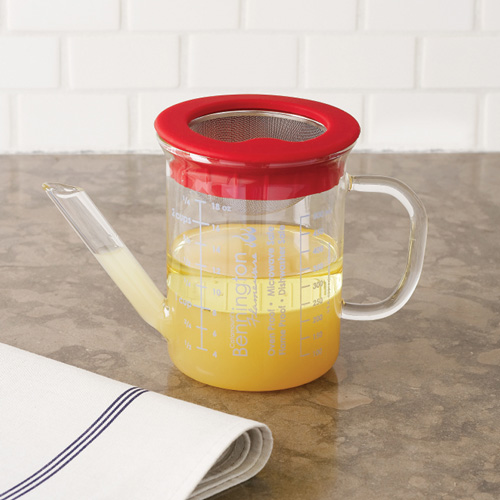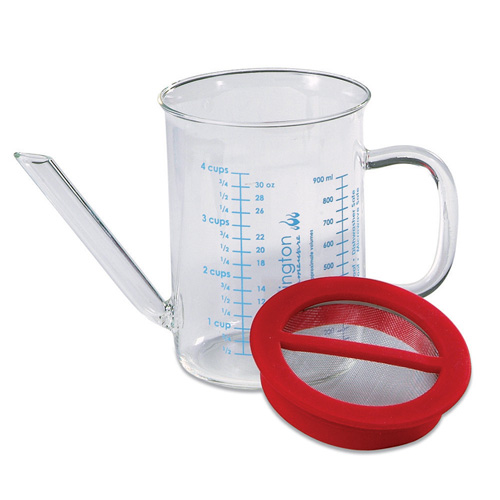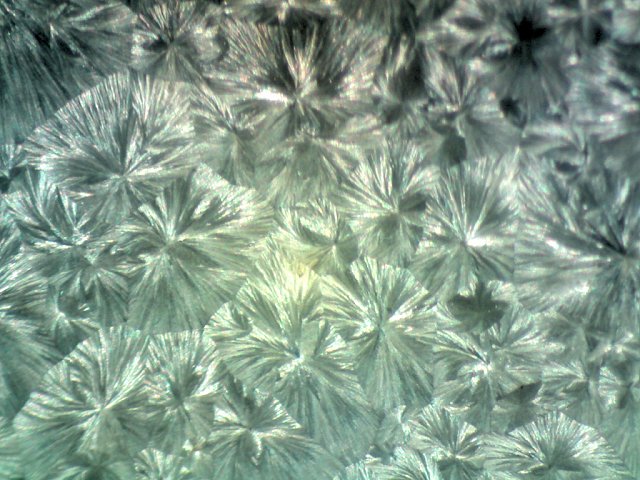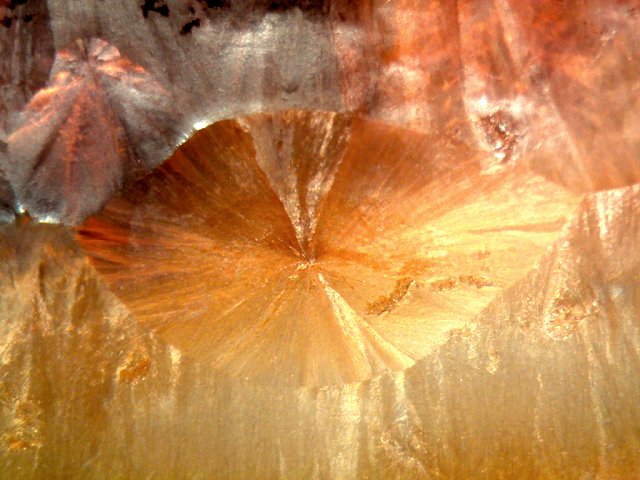 |
Note: | This page is a transcription of 69ron's Non toxic food safe extraction of mescaline using d-limonene (orange oil) tek[1]. The content is to remain accurate as such. |
Procedure
| Procedure for Full range acetate extract from cactus using d-limonene
|
 |
|
1. |
|
Powderize your dried cactus. Mix 100 grams of dried powderized cactus with 25 grams of calcium hydroxide. Add 300 ml water to make it feel wet but not watery. Mix for about 5 minutes.
|
|
2. |
|
Add 300 ml of d-limonene. Mix well. Let sit a few hours.
|
|
3. |
|
Pour off the d-limonene through a filter.
| NOTE |
 |
|
It's really cool if you use a French Coffee Press for this. Using a French Coffee Press you press the cactus mix and squeeze out the d-limonene to get every last drop of d-limonene out. Then filter it through a paper coffee filter.
|
|
|
|
4. |
|
Add 25 ml of vinegar to the d-limonene. Mix thoroughly.
|
|
5. |
|
Separate the vinegar from the d-limonene (the vinegar is at the bottom, the d-limonene at the top). This vinegar will contain mescaline acetate. Evaporate your vinegar in a food dehydrator at 155 F to get waxy amber slightly impure mescaline acetate.
| NOTE |
 |
|
To separate the vinegar from the d-limonene you can use a glass gravy separator or a separatory funnel. Seperatory funnels are considered laboratory glassware and are banned for individual use in some locations. A gravy separator works almost just as well and can be found at some local kitchenware shops.
|
|
|
|
6. |
|
Repeat steps 4 and 5 at least 2-3 times.
|
|
7. |
|
Repeat steps 2 - 6 at least 2 times.
|
The great thing about this tech is that is it 100% food grade and non-toxic. You can buy food grade calcium hydroxide at many places, it's often called hydrated lime and is used in cooking (making pickles, tortillas, etc.). Make sure to use non-toxic food grade d-limonene, that way if any d-limonene residue is left behind its safe to ingest it. Use regular white vinegar that is 5% acetic acid.
The result is a waxy amber colored slightly impure mescaline acetate approximately 40-95% pure. It might take a while to dry complete. Have patience.
SWIM has used this tech and got yields you cannot believe. Mescaline acetate is a little waxy, and tends to stick to things. It's texture is not as nice as mescaline HCl which is much more powdery in texture. However, SWIM has found that mescaline acetate is stronger by weight than mescaline HCl. He's not sure why. It should be weaker because it's heavier. I believe it absorbs faster and that's why it's stronger. It definitely comes on much quicker than mescaline HCl does.
The purity of this extraction is good enough for a great trip. You really don't need 99% purity. At about 90% pure, it's concentrated enough to put into gel tabs for a really nice convenient trip without all the bulk of the cactus. At this purity level mescaline acetate is still a little stronger than 99% pure white mescaline HCl. SWIM has both and has compared them many times already. The white 99% pure mescaline is prettier and is not waxy, so it's easier to deal with, but it's less potent with otherwise nearly identical effects.
Note that this tech was developed for San Pedro cactus but should work equally well for Peyote, Achuma, and Peruvian Torch.
The alkaloid extract produced from this tech is a mix of various alkaloids. The exact mix of mescaline to other alkaloids present depends on the type of cactus used as well as the individual specimen extracted. Mescaline acetate is a white free flowing powder. If the extract is brown or amber, or sticky, it's got a high number of non-mescaline alkaloids present. It can be used as is for the full spectrum effects, but if one wants a more pure product, the other alkaloids can be easily removed.
In this section we talk about a very simple technique for cleaning up the mescaline acetate by removing the non-mescaline alkaloids.
Mescaline acetate is insoluble in MEK (methyl ethyl ketone). MEK is a solvent that is found in fruit, similar to d-limonene. It's a normal part of the human diet, but only in very small amounts, like acetone. D-limonene is a much safer solvent, but MEK evaporates really fast so it's easily removed from the end product. Please make sure the MEK is dry, otherwise the water content will make you lose all or most of your mescaline
Procedure for Purification of Mescaline Acetate
| NOTE |
 |
|
Be absolutely sure your MEK is dry, otherwise this wont work and the MEK wash will take your mescaline away. To dry MEK, mix it thoroughly with excess magnesium sulfate (epsom salts), let stand and decant MEK away from bottom layer of magnesium sulfate
|
|
|
 |
|
1. |
|
Dissolve 200 mg of impure sticky amber mescaline acetate in 2 ml of cold DRY MEK.
| NOTE |
 |
|
Cold MEK referring to Methyl Ethyl Ketone stored in the refrigerator or freezer (It will not freeze).
|
|
|
|
2. |
|
Smash the impure mescaline finely in the MEK. You want the mescaline acetate to form a fine powder at the bottom. Wait for a while until the mescaline acetate powder sinks to the bottom.
|
|
3. |
|
Decant the MEK slowly, being careful not to disturb the mescaline acetate.
|
|
4. |
|
Repeat with 2 ml more cold MEK.
|
|
5. |
|
After the second wash and decant, dry the mescaline acetate with a fan. After all the smell of the MEK is gone, you're left with off-white nearly pure mescaline acetate.
|
The impurities removed by the MEK in some cases can be as much as 60% of the alkaloids extracted. The impurities tend to be much less for Peruvian Torch, and very high for Achuma and some varieties of San Pedro.
The amber impurities in the MEK can then be evaporated and used separately. They are typically very sticky and will not form a dry powder even after the MEK is completely evaporated. There are at least two active alkaloids present if the cactus used was San Pedro or Achuma. They are psychoactive, but very much unlike mescaline. San Pedro's impurities tend to be more sedating, similar to the effects of harmaline. Both San Pedro and Achuma have an impurity present that seems to have some MAOI activity which can be used to greatly enhance the effects of morning glory seeds, HWBR seeds, and ololiuqui seeds.
Pure mescaline acetate is a white free flowing powder with a slightly waxy texture very similar to freebase DMT. You'll find that it's much easier to manage after purifying it, being not nearly as waxy, and no longer sticky.
After purification, the experience is a much finer clearer experience far more resembling the effects of LSD, especially when taken with coffee. It is to some, far superior to the effects had from the full spectrum of cactus alkaloids.
For the tech to remain food grade, USP or FCC grade MEK must be used. If technical grade or ACS grade is used, it's no longer food grade.
|
| Materials Required |
 |
Source Material:
- 100 grams of dried cactus, preferably dried green outer flesh with the core, spines, and the thin waxy skin removed from it.
|
Solvents:
- 300 ml of any type of drinking water. Tap water is just fine.
- 900 ml of food grade non-toxic d-limonene (orange oil).
| NOTE |
 |
| Note that some non-distilled d-limonene apparently contains traces of citric acid (less than 0.1%). Someone brought this up as a possible concern. The amount of citric acid present is too small to have any impact at all on the extraction process. We would need at least 10 grams of citric acid for there to be any impact at all on this extraction process. 0.1% of 1000 ml is only 1 gram, and most non-distilled d-limonene would contain much less that 0.1%. So don’t worry about traces of citric acid present in non-distilled d-limonene, its of no concern at all. Citric acid cannot be distilled, so distilled d-limonene cannot contain any at all.
|
|
|
Reagents/Desiccants:
- 25 grams of edible calcium hydroxide (hydrated lime).
- 150 -225 ml of vinegar (ideally, white vinegar, that is, acetic acid 5%).
|
Equipment:
- 3 coffee filters.
- A large container to hold the cactus mix. It's best to use glass or metal. If plastic is used, HDPE or PP is best. Do not use polystyrene because it dissolves in d-limonene.
- A dish for evaporating your final alkaloid extract in.
- A glass gravy separator or a separatory funnel (HDPE or PP plastic could be used instead of glass)
|
|
Dosage Information
Here are the dosages as stated on Erowid for mescaline HCl. The dosage for mescaline acetate is nearly identical, but this extract is roughly 90% mescaline acetate plus some other active alkaloids so this dosage guide is fairly accurate for this extract.
- Threshold 100 mg
- Light 100 - 200 mg
- Common 200 - 300 mg
- Strong 300 - 500 mg
- Heavy 500 - 700 mg
SWIM does not recommend more than 200 mg for a first time experience. 100 mg is enough for SWIM to experience some minor psychedelic effects. Below that it’s mostly just a pleasant euphoric stimulant very similar to MDMA. SWIM can feel the effects of as little at 50 mg of mescaline, but it’s not psychedelic at all at that dose. For him, the psychedelic effects kick in at about 100 mg, but are mild. At 200 mg the psychedelic effects are very noticeable, but not too heavy. At 300 mg and above, it becomes quite a heavy experience from many people.
Dosage Using Gel Caps
DISCLAIMER: THIS INFORMATION ABOUT GEL CAPS DOSAGING IS NOT ACCURATE! Others have measured and this information is NOT correct. A 00 capsule has been made to fit 1.5g crude mescaline acetate, so please be careful, better weigh it than potentially having a too strong unwanted dose!
The following shows how much dry mescaline acetate (extracted using this tech) will fit into the specified gel cap if tapped down tightly. Using this information you can measure doses without the use of a scale.
- 1 size "5" holds 65-75 mg
- 1 size "4" holds 110-120 mg
- 1 size "3" holds 165-175 mg
- 1 size "2" holds 205-215 mg
- 1 size "1" holds 280-290 mg
- 1 size "0" holds 390-400 mg
- 1 size "00" holds 540-550 mg
- 1 size "000" holds 790-800 mg
Most people find a size "5" to be very euphoric without psychedelic effects.
A size “3” is a good starter dose. That’s enough to know what mescaline is like without being blown away by it.
A size “0” and larger should be avoided unless you’re really comfortable with mescaline.
Pictures
Here's a picture of a glass gravy separator which can be used to separate the vinegar from the d-limonene. The top filter is removable.
To separate the d-limonene (orange oil) from the vinegar solution, simply pour the solution into the gravy separator (with the filter removed) and wait for it to settle into two separate layers. If any d-limonene gets into the pouring spout, just pour that out and put it back into the gravy separator. Then pour out the lower vinegar layer. The d-limonene stays on top of the vinegar and won’t come out of the gravy separator until almost all the vinegar is out. It takes a little practice to get the handle of using it, but once you do it works really well.


Here are some pictures of what the resulting crystals look like up close. The first is from the center of SWIM's evaporation dish where the white waxy mescaline acetate crystals are about 95% pure. The second picture is from the perimeter of his evaporation dish were the mescaline acetate is about 70-80% pure. You can see amber colored alkaloids surrounding the mescaline acetate crystals making them appear amber. At least one of these other alkaloids is psychoactive.
(NOTE: these photos were NOT taken by me.)


Pure white mescaline HCl from cactus using d-limonene
 |
Note: | This section is a transcription of 69ron's Pure white mescaline HCl from cactus using d-limonene tek[2]. The content is to remain accurate as such. |
 |
Note: | The most current TEK for pure mescaline is the cold MEK wash transcribed above. |
| Procedure for Pure white mescaline HCl from cactus using d-limonene
|
 |
|
1. |
|
Powderize your cactus. Mix 100 grams of cactus with 25 grams of calcium hydroxide. Add 300 ml water to make it feel wet but not watery. Mix for about 5 minutes.
|
|
2. |
|
Add 300 ml of d-limonene. Mix well. Let sit a few hours.
|
|
3. |
|
Pour off the d-limonene through a filter.
|
|
4. |
|
Add 25 ml of water with 5 ml of 10% HCl solution to the d-limonene. Mix thoroughly.
| NOTE |
 |
|
DO NOT USE CONCENTRATED HYDROCHLORIC ACID. IT MUST BE DILUTED OR A BUNCH OF JUNK WILL PRECIPITATE OUT OF THE D-LIMONENE. Some people claim this stated ratio of HCl solution to water is too strong and will precipitate too much junk. [Here's an example of more dilute suggested ratio] |
|
|
|
5. |
|
Separate the water from the d-limonene (the water is at the bottom, the d-limonene at the top). This water will contain mescaline HCl. Evaporate your water in a food dehydrator at 155 F to get sticky brown impure mescaline HCl.
|
|
6. |
|
Repeat steps 4 and 5 at least 2-3 times,
|
|
7. |
|
Repeat steps 2 - 6 at least 2 times.
|
Ok, now you have a bunch of sticky brown impure mescaline. You first wash it with acetone about 2 times. You use about 20 ml of acetone for each wash. With the acetone covering the mescaline, you small the mescaline and much as you can. You want to powderize it in the acetone. Wait for all the particles to settle down and then carefully decant your acetone so that none of the mescaline is decanted with the acetone. Repeat it with 20 ml more acetone.
Ok, at this point the mescaline is usually very light tan and it's difficult to get it pure white with more acetone washes. So we now wash with 99% isopropyl alcohol one time. We use about 20 ml. It must be 99% isopropyl alcohol. Pour it over your light tan crystals and mix it. Let all the pieces settle down. Now carefully decant the IPA leaving behind pure white mescaline HCl. |
Reference
- ↑ Non toxic food safe extraction of mescaline using d-limonene (orange oil)
Revision 1.221[1]
- ↑ Pure white mescaline HCl from cactus using d-limonene[2]



